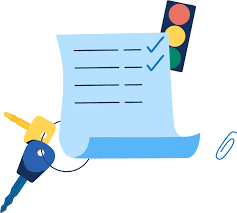What’s the path for teens and preteens once the Congressional hearings on social media wrap up? Ideas are likely to come from the transportation field. There will be talk about using guardrails to keep social media in its place and slow down users. And then there will be a push towards civic education and instruction.
So, a provisional digital license/phone may sound suitable and it is something I have campaigned for over a number of years. Before we let kids go online, they need to be fortified with targeted classroom instruction, parental guidance, and real-time experience- just like in driver’s education. Earning a phone is not automatic– kids commit to doing the homework and completing challenges before they are safe on their own.
As in motoring, it takes a decade or longer after a technology emerges for the instructional need to be recognized. It was not until 1932 that drivers education classes were taught in the U.S. For digital education, it has taken nearly 12 years after the initial iPhone for digital education to get mandated.
Curriculums:
Today, just four states have a mandate for this: Texas, Delaware, New Jersey and California. In principle, California has begun the framework for a provisional license. It requires the state’s Instructional Quality Commission to slowly roll out a curriculum framework while considering how to incorporate media literacy content into English language arts, math, science, history and social science lessons.
But, if we are going to have an effective program in digital education, we might want to borrow some more ideas from driver’s education.
In the following table, I compare the two programs on some basics:
| Driver’s Education | Digital California |
|---|---|
| Roughly 10th grade- Ages 14, 15, onward | K-12 |
| Requires direct parental involvement | Primarily Teachers in Schools |
| Practice: inside the car, hands on | Practice: throughout the curriculum |
| Special Problems: DUI, drugs, speeding | Special Problems: Sexting, bullying, privacy |
| Safety: Car Seats, Seat Belts, Air Bags | Safety: COPPA (13 and under) |
There are two significant differences. First, a curriculum is only useful when it reaches children at the right time/right age. For example, digital education requires an understanding of seeing and searching that is beyond the cognitive scope of very young children. There is considerable research from media studies indicating that young children cannot distinguish fact from fiction and are not fully aware of the persuasive nature of ads until ages eight or nine. This flies in the face of preschool and kindergarten instruction that is increasingly using ed-tech in the classroom. It is up to both teachers and parents to set guidelines for digital use and safety, not something that young children can be expected to do on their own.
Likewise, when I looked at the curriculum for older children, the need for digital literacy “spilled over” into traditional subjects. The California Instructional Quality Commission recommends that middle and high school math teachers integrate digital literacy throughout their lesson plans. But if students are struggling with how to multiply and divide, and later how to do algebra and calculus, this extra layer of digital education will distract both teachers and students from the core needs.
Parents Too:
When it comes to the provisional driver’s license– one of the key differences- arguably the most important one- is. that we do not depend on the instruction to be completely fulfilled by a third party, namely public education. Driver’s education requires involvement by a parent or supervising adult who is there as the student practices. They become another set of eyes. Many hours of training are required before kids can go to the next step and take a road test. But that’s a necessary step to keep our children safe- and others on the road.
If parents are “missing in action” (MIA) – what is detaining them? Are they, like the average adult, busy on their own phones six hours a day? What if these parents prefer sharing on social media to spending time with their own kids and other family members? Or, they interrupt their family dinners, if they hold them at all, to glance at incoming messages and texts. It’s going to be difficult for the schools to do the heavy lifting when parents are MIA.
The point is that digital literacy can succeed only when parents do too. Just as parents who have a good driving record are more likely to have teens that become safe drivers, kids are more inclined to succeed with digital literacy if their parents set the example. It could be that in the current times, our kids are eager to start their provisional digital license but their parents are not so ready.

